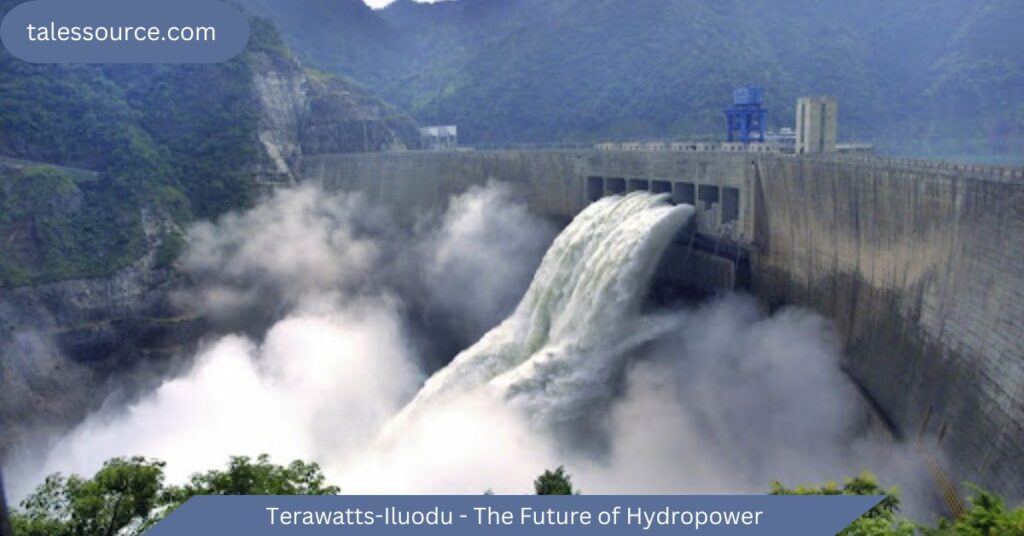Terawatts-Iluodu – The Future of Hydropower

Introduction to Terawatts-Iluodu
The term “Terawatts-Iluodu” refers to one of the largest hydropower stations in the world, officially known as the Xiluodu Hydropower Station.
Located on the Jinsha River, a major tributary of the Yangtze River in China, this colossal energy project is a testament to the engineering prowess and ambition of China’s energy sector.
In this article, we’ll dive deep into the features, impact, and engineering marvel behind the Terawatts-Iluodu, while shedding light on its importance in the global renewable energy landscape.
Understanding the Terawatts-Iluodu Project

A Brief Overview of Xiluodu Hydropower Station
The Xiluodu Hydropower Station, known colloquially as Terawatts-Iluodu, was constructed on the Jinsha River and is second only to the Three Gorges Dam in China.
Its installed capacity of 13,860 megawatts (MW) makes it one of the largest hydropower plants globally. First commissioned in 2013, the Xiluodu station was part of China’s ambitious strategy to diversify its energy portfolio, tapping into hydropower as a renewable and eco-friendly energy source.
This dam’s construction required groundbreaking civil engineering, harnessing the immense flow of the Jinsha River while minimizing environmental impacts.
Geographic Location and Strategic Importance
Xiluodu is strategically located in the upper reaches of the Yangtze River, nestled within the Jinsha River basin. This region is not only known for its high water flow but also for its geological suitability for large-scale dams.
The electricity generated here is fed into the State Grid, providing clean energy to millions of people across the region. Additionally, the station contributes significantly to China’s efforts to reduce greenhouse gas emissions, which are a key part of the country’s environmental policy.
Read More: Gaunche – A Comprehensive Exploration of the Indigenous Inhabitants of the Canary Islands
Engineering and Technological Feats

The construction of the Xiluodu Dam required advanced engineering techniques due to the challenging terrain and the massive scale of the project.
The double-curvature arch dam, standing at a height of 285.5 meters, is one of the tallest in the world. This structure is designed to withstand the immense pressure exerted by the river’s flow, using an innovative arch design that distributes the force evenly.
Furthermore, the dam features 18 turbines, each capable of generating 770 MW of electricity. The project demanded cutting-edge technology to ensure efficiency and reliability. The underground powerhouse adds to the sophistication of the project, minimizing the surface footprint and enhancing environmental preservation efforts.
Future of Terawatts-Iluodu and China’s Energy Strategy
While the Xiluodu project represents a significant achievement in energy production, it also highlights the delicate balance between development and environmental preservation.
The project’s environmental impact was carefully evaluated, particularly in terms of wildlife conservation, water quality, and habitat disruption. Measures were taken to relocate populations, restore ecosystems, and monitor water levels to mitigate the environmental footprint of the dam.
By generating hydropower, which produces minimal carbon emissions compared to fossil fuels, the Xiluodu Hydropower Station aids China’s carbon neutrality goals. However, hydropower comes with challenges, such as sedimentation, alteration of natural habitats, and potential impact on downstream water quality.
The Economic and Social Impact of Terawatts-Iluodu
Contribution to China’s Energy Grid
One of the most significant contributions of the Xiluodu Hydropower Station is its role in stabilizing and powering the Chinese energy grid.
It has become a cornerstone in China’s transition from coal-based energy generation to renewable sources, helping to reduce reliance on polluting fuels. The 13,860 MW capacity plays a key role in achieving China’s national goals of increasing renewable energy capacity and reducing emissions by 2030.
The electricity generated from Terawatts-Iluodu is crucial in powering industrial cities such as Chengdu, Chongqing, and Kunming, spurring economic growth and reducing energy poverty.
Job Creation and Regional Development
The Xiluodu project also brought significant job creation during its construction and continues to offer employment in maintenance, operations, and administration.
Beyond direct employment, the surrounding regions have benefitted from improved infrastructure, such as roads, bridges, and telecommunications, further boosting economic opportunities in the local communities.
The influx of economic activity and energy availability has made the Jinsha River region a hub for industries that rely on a consistent power supply, from manufacturing to tech companies. This ripple effect has uplifted the socio-economic conditions of many areas previously isolated from China’s rapid industrialization.
Read More: Project Valvrein – Revolutionizing the Future of Biotechnology
Future of Terawatts-Iluodu and China’s Energy Strategy

Hydropower and China’s Renewable Energy Goals
The success of the Xiluodu Hydropower Station underscores China’s commitment to expanding its renewable energy portfolio.
Hydropower plays a pivotal role in meeting the country’s energy needs while working towards carbon neutrality by 2060. Although wind and solar energy are also expanding rapidly, hydropower remains one of the most reliable and consistent renewable sources, particularly for base-load power.
The Chinese government is expected to replicate the success of Terawatts-Iluodu in other parts of the country, building more dams in areas rich in water resources. This will likely result in a shift away from coal and other fossil fuels, further contributing to a global reduction in greenhouse gas emissions.
Challenges and Opportunities for Hydropower
However, the expansion of hydropower also presents challenges. Dams of this scale have the potential to disrupt local ecosystems, affect the livelihoods of communities dependent on the river, and alter water management systems.
Future hydropower projects, inspired by Xiluodu, will need to balance development with environmental sustainability.
Nonetheless, hydropower remains a key part of China’s energy future, providing the nation with a stable, low-carbon source of electricity that can be scaled to meet growing demand.
Conclusion:
The Xiluodu Hydropower Station is a symbol of China’s dedication to innovation, renewable energy, and sustainable development. As the world shifts toward cleaner energy solutions, Terawatts-Iluodu serves as a blueprint for future large-scale hydropower projects. With its massive output, socio-economic benefits, and environmental considerations, it plays a critical role in shaping both China’s energy landscape and global efforts to combat climate change.
FAQs
1. What is Terawatts-Iluodu?
Terawatts-Iluodu refers to the Xiluodu Hydropower Station located on the Jinsha River in China. It is one of the largest hydropower plants globally, with an installed capacity of 13,860 MW.
2. Where is Xiluodu Hydropower Station located?
The station is located on the Jinsha River, a tributary of the Yangtze River, in the southwest of China.
3. When was the Xiluodu Hydropower Station commissioned?
The Xiluodu Hydropower Station was officially commissioned in 2013, following years of construction.
4. What is the capacity of the Xiluodu Hydropower Station?
The station has a total installed capacity of 13,860 megawatts, making it one of the largest in the world.
5. How does Xiluodu contribute to China’s energy supply?
Xiluodu contributes significant amounts of renewable energy to China’s grid, helping reduce dependence on coal and contributing to the nation’s renewable energy targets.
6. What are the environmental impacts of the Xiluodu Hydropower Station?
Although Xiluodu generates clean energy, its construction and operation have impacted local ecosystems and displaced some communities.
7. How does Xiluodu help with flood control?
In addition to power generation, Xiluodu helps regulate water flow and control flooding downstream on the Yangtze River.
8. How much electricity does Xiluodu produce annually?
Xiluodu generates an average of 57.12 terawatt-hours (TWh) of electricity each year.
9. What role does hydropower play in China’s renewable energy future?
Hydropower is a cornerstone of China’s renewable energy strategy, providing a reliable and consistent source of clean energy.
10. Can hydropower projects like Xiluodu be replicated globally?
Yes, large-scale hydropower projects like Xiluodu can be replicated in other countries with suitable water resources, contributing to global renewable energy goals.
Read More:





